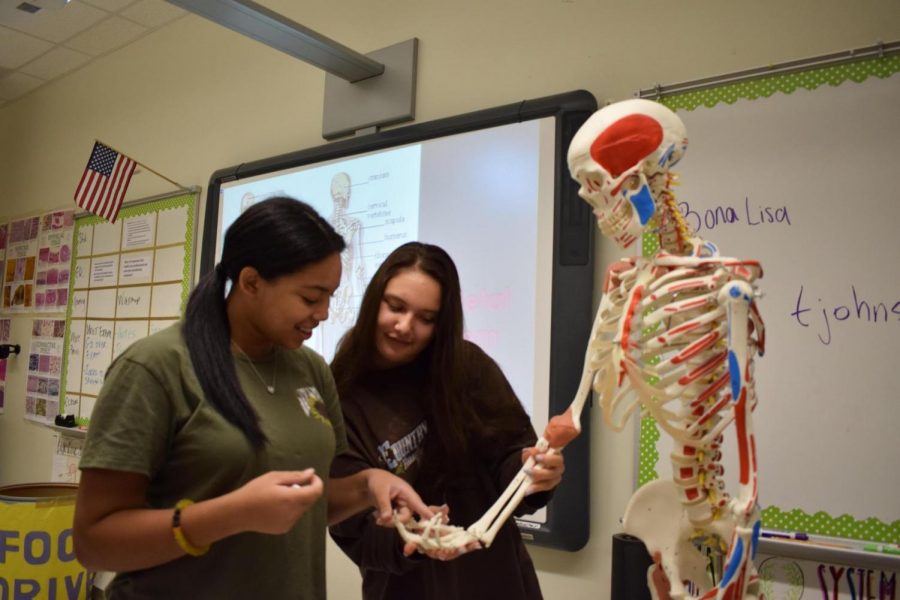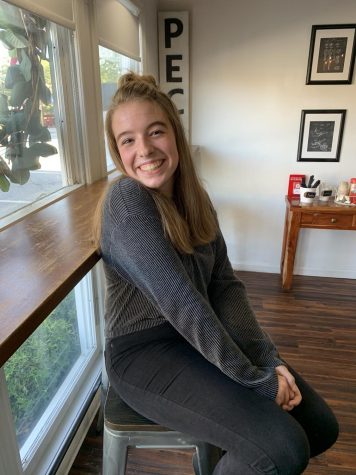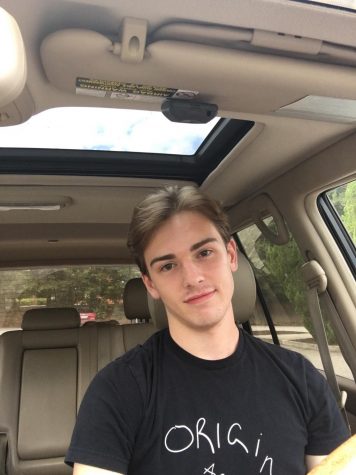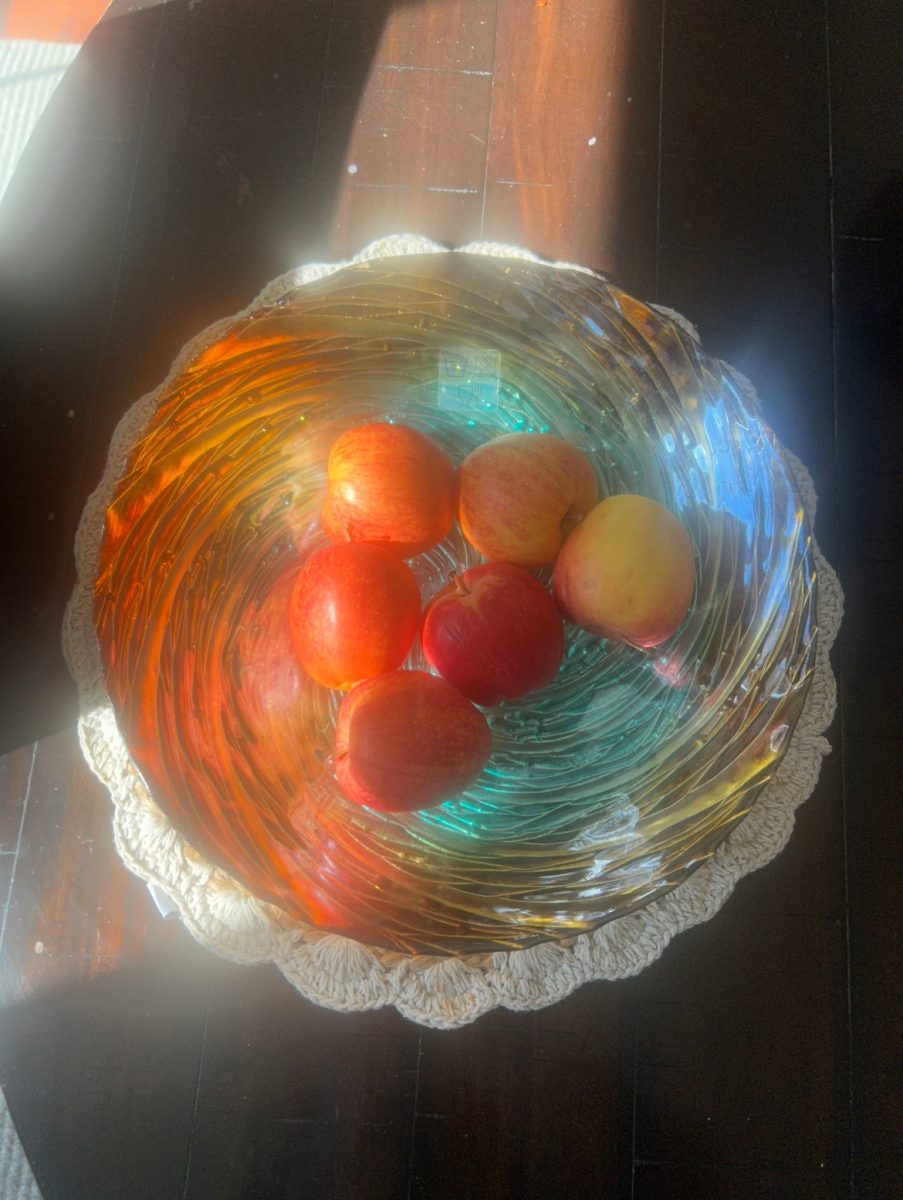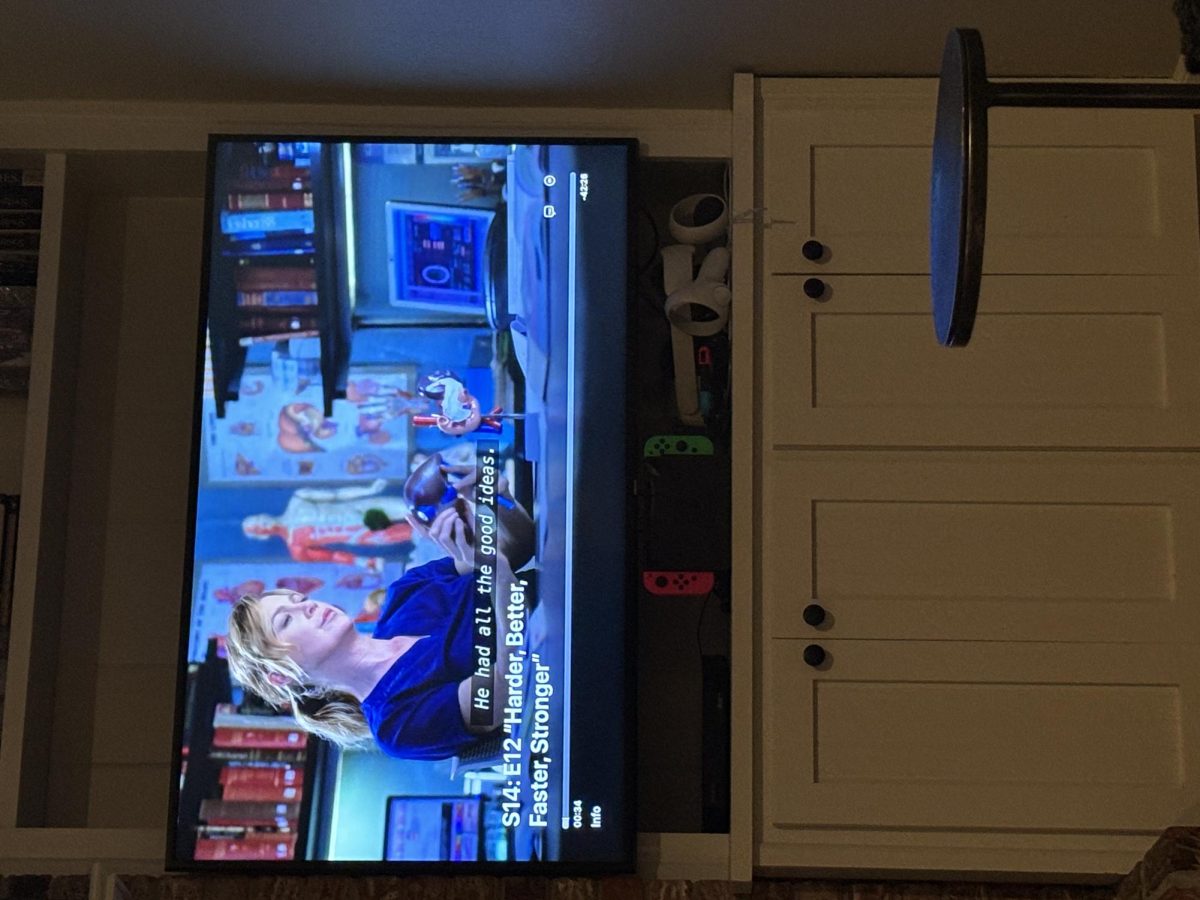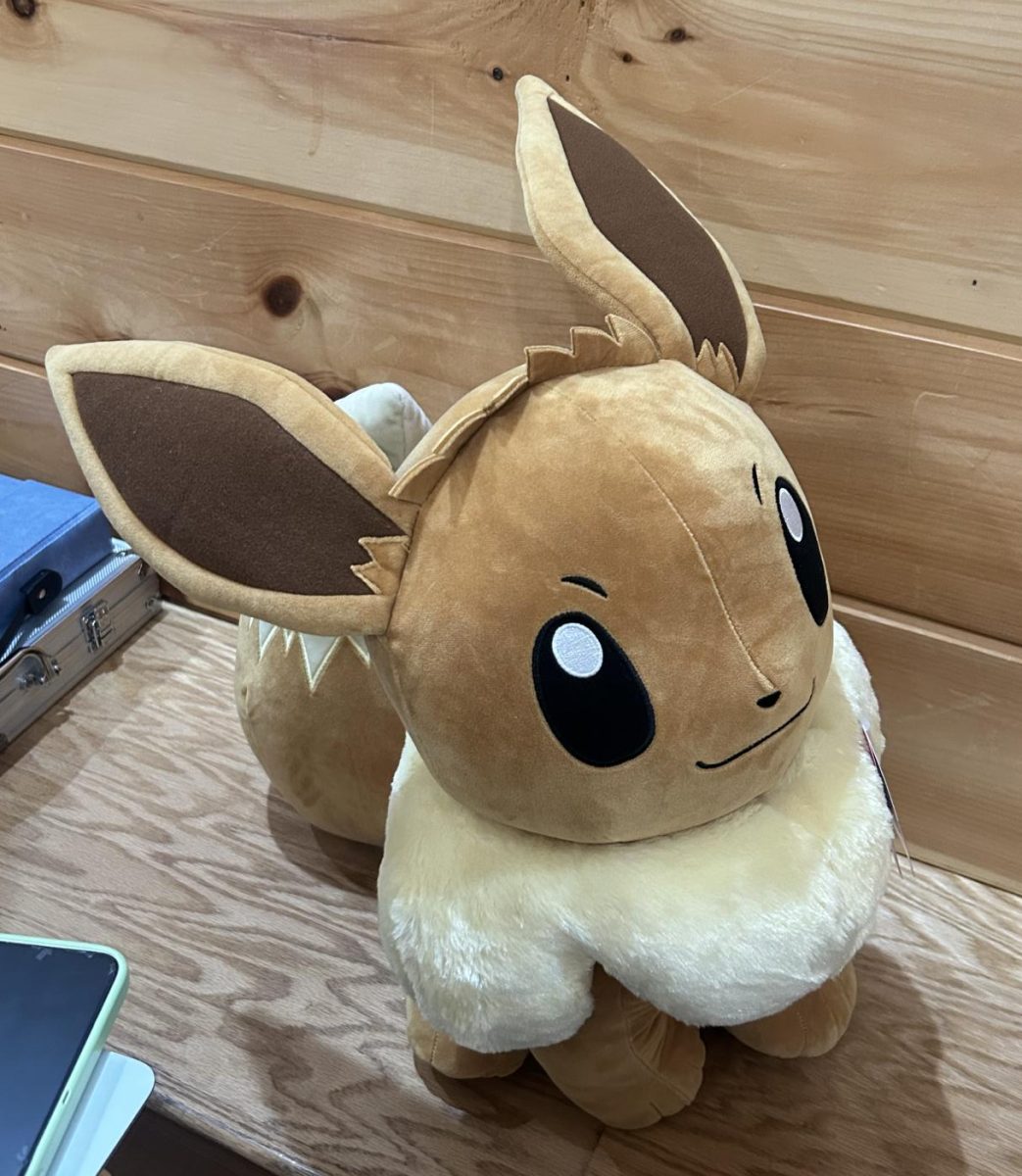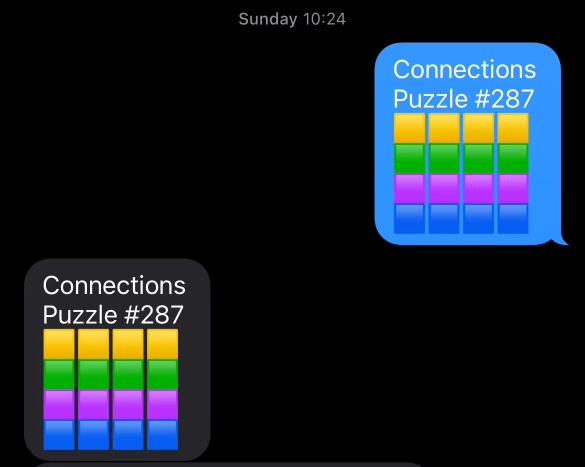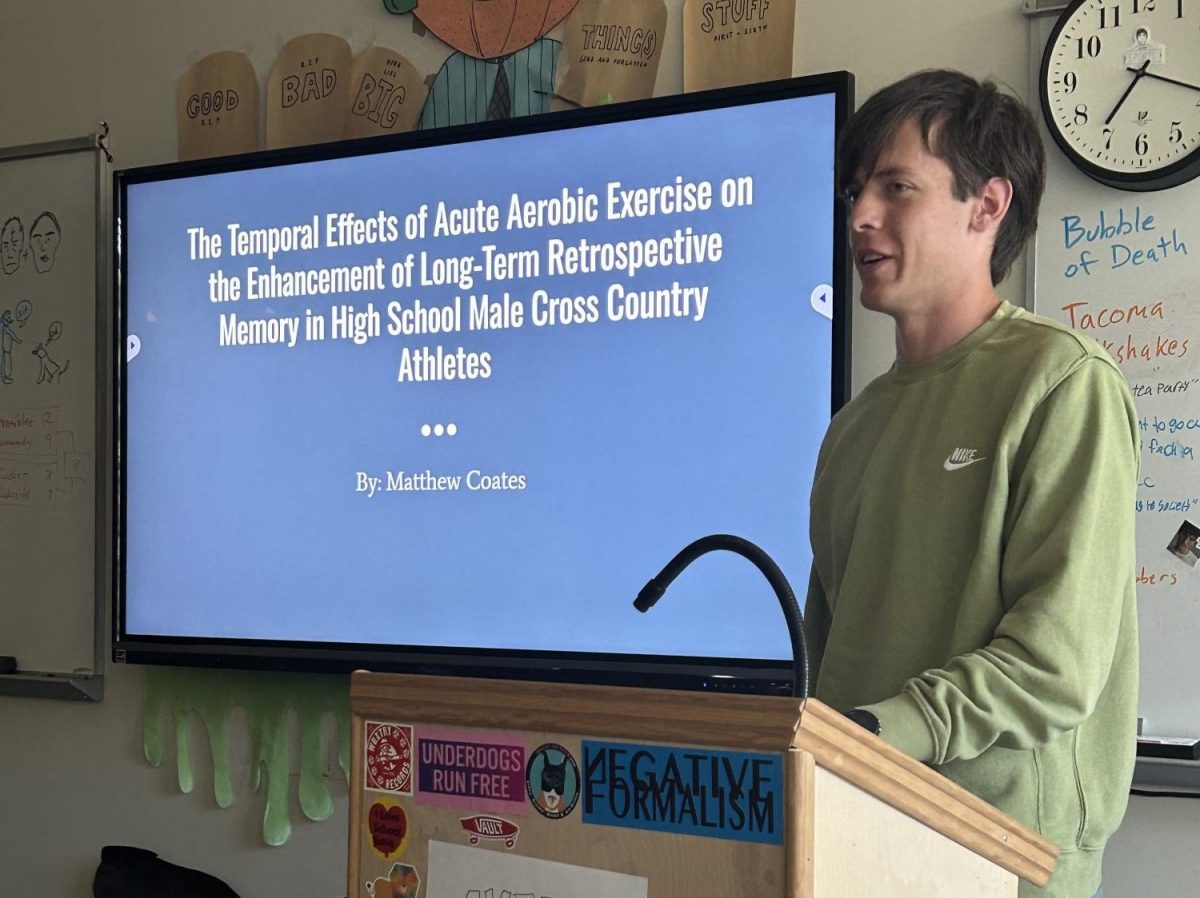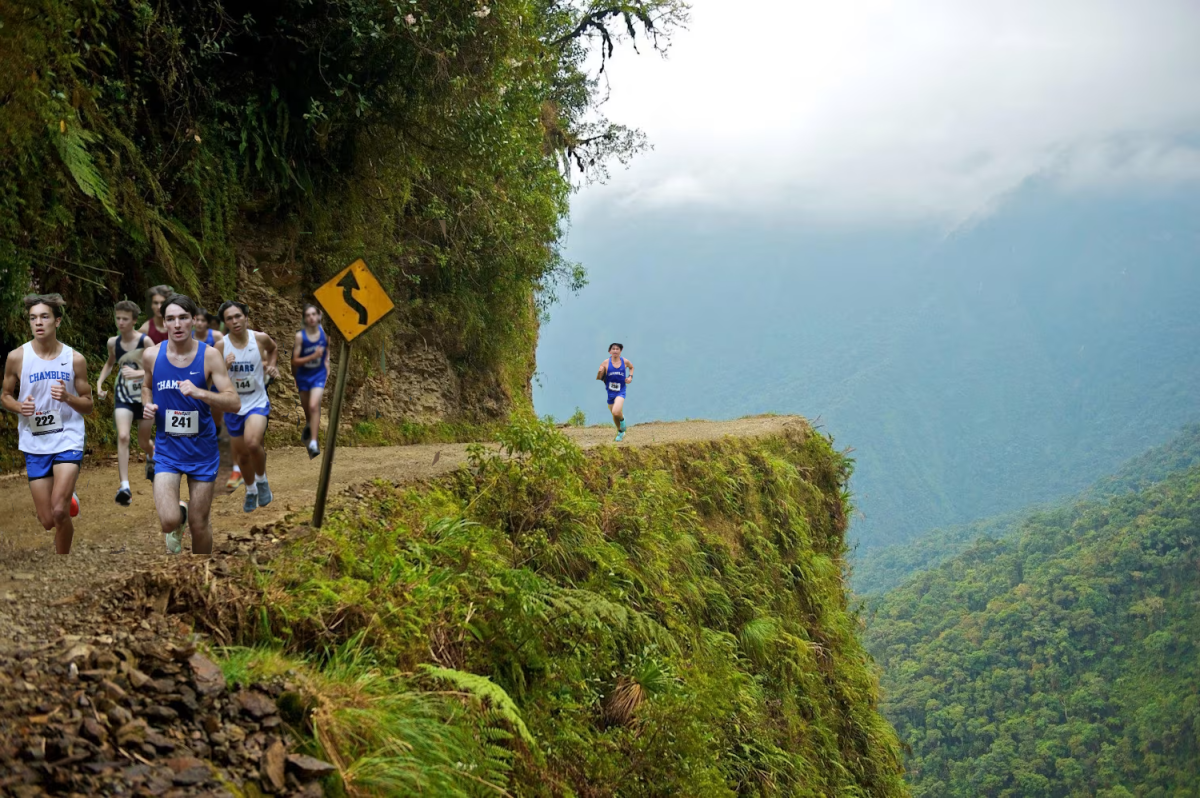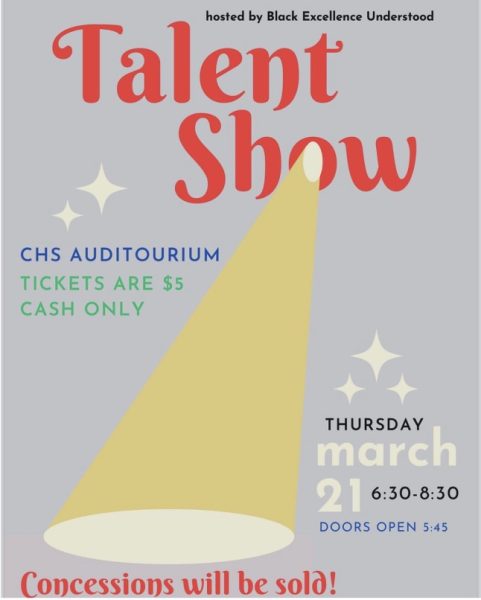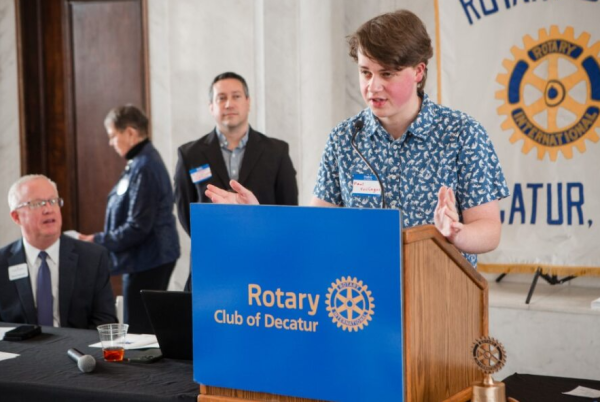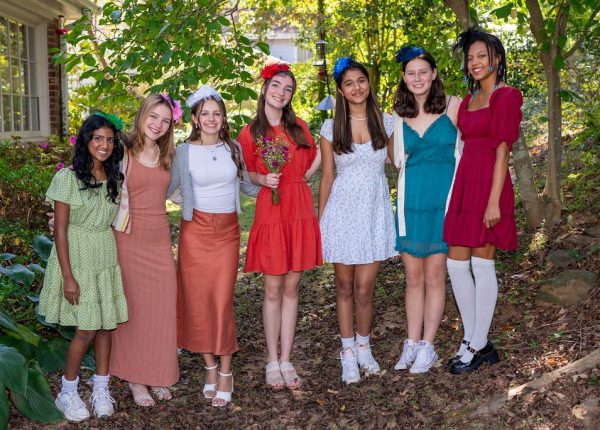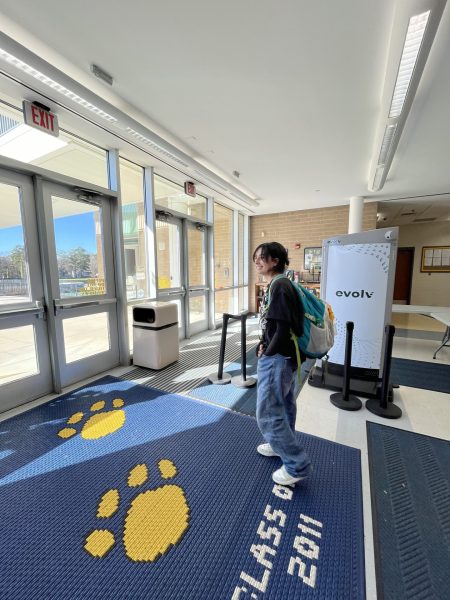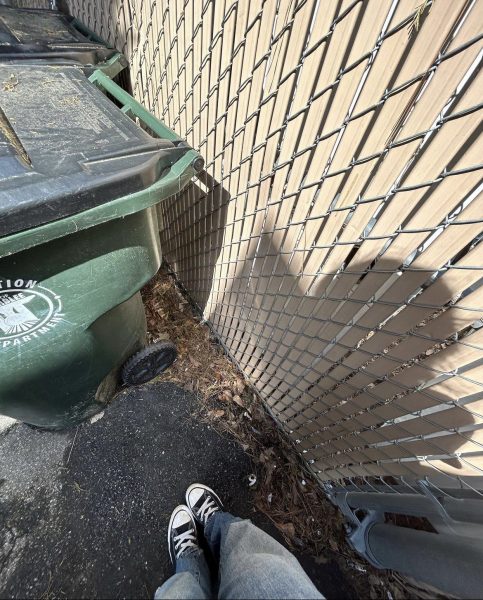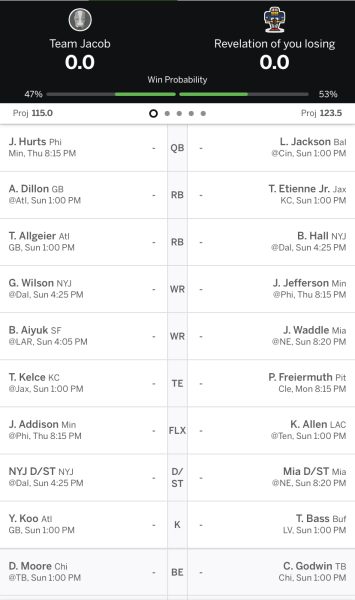Engineering and Career Tech Department
January 13, 2020
Business Law
Business law is the second level of the business career tech pathway. In this class, students interested in going into careers in this field are encouraged to explore the legal aspects of entrepreneurship. Students interviewed disagreed over the amount of material being taught in the class. Sanchit Seghal explained the class is “pretty easy, you don’t really do anything or learn anything. You’re supposed to be learning about law but you don’t learn that much, really.”
Dylan Desimone disagreed, saying that “the work is really easy even though you’re learning law, and Mr. Johnson makes it engaging.” The students interviewed agreed that the class is heavily focused on book work and independent study.
Most students agreed that this class is especially useful for learning about business and legal careers, like junior Evelyn Raphael.
“My goal after high school is to become a lawyer and get my MBA, so I thought this would be helpful. If you’re not willing to read the textbook then I don’t recommend this class, but if you’re passionate about it then I would,” said Raphael.
Students agreed that this class was not challenging and gives students freedom and free time during almost every class period. This class is best fit for students interested in business, entrepreneurship, or law, but who also do not mind book work or independent study.
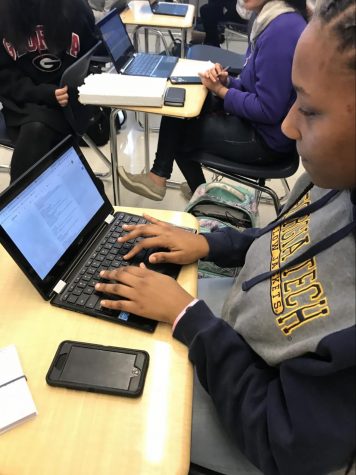
Intro to Healthcare Science
This class is the first year of the healthcare science pathway. This is the second year this course has been offered and is generally aimed at freshman, but there are some sophomores in the course, too.
Most students take this class if they plan on going into a healthcare career, but some students believe the class is too heavily focused on busy work to be useful.
“The lectures don’t feel engaging and the class just isn’t interesting. I thought this might be cool because I didn’t want to take band or something else so I just took it on a whim, kind of. I wouldn’t [recommend this class to others] because we really don’t learn anything. We do a lot of textbook graphic organizers and just copy words from the textbook and it feels like a waste of time,” said Will Elder.
Other students found the class engaging.
“There’s a lot of debates about healthcare issues which is definitely fun, and you learn from other people and get to listen to different perspectives,” said Lirina Curi.
The students interviewed agreed that the workload is manageable, and the class is an easy A.
“The class is a lot of book work but that’s just the first year and then after that it’s more hands on. If you do all the work, then it’s definitely an easy A,” said Elesi Tedjame-Morty.
Design and Project Engineering
This class is part of the career tech engineering pathway and is open to upperclassmen who have completed other engineering classes. Students agree that this class offers a space to be creative and choose the projects they want to do.
“It’s a very open and free class where you get to use the skills you learned in prior years to pursue projects and products that interest you the most. I would definitely recommend this to others and I took the class because I’m very hands on and I like to work in the shop and this is the class that allows me to do that,” said senior Andrew Rogers.
The students interviewed all recommended this class but noted that the class can be difficult.
“If you have a harder project it’s a harder class because you might have to stay after school so you meet your deadline. Also there’s a lot of time management involved because you have four projects all at one time and you have to finish them by the due date that you set for yourself. And sometimes you have to work on two projects at once, so if you aren’t able to budget your time then it’s definitely not an easy A,” said Omer Cinar.
Students also agreed that the best part of the class is presenting to other students.
“I would say when you get to see everyone else’s projects when we’re doing product testing it’s really cool and you get to see everyone’s ideas which is cool,” said Andrew Counsel.
This class is a great for students looking to explore the field of engineering and share their work with others, but should be prepared to manage their time in order to succeed.
Teaching as a Profession
This class is a mixed-level class with Teaching I, II, and III students in the same period. The class ranges from freshmen to juniors and allows students to shadow their favorite teachers twice a week. Students agreed that the class is certainly unique and works well for students looking for a dynamic, hands-on career tech class.
“It’s very different. It’s a pretty unique class and I learn new things, for sure. I’m learning about a lot of parts of the education field that I didn’t know existed, which is cool,” said Samayah Mohamed. “I’d recommend it just because it’s pretty easy if you’re willing to help the teachers. The shadowing is definitely my favorite part.”
Students also agreed that the class felt like it prepared them to explore teaching as a career and prompts you to think about whether teaching is the right career for you.
“I think in a way it does prepare you for being a teacher because we get to shadow our favorite teacher for our favorite subjects. So I help Ms. A, and I get to grade her work, see her classes, see how they’re set up, that sort of thing,” said junior Angel Ngote. I took this class at first because I wanted to become a teacher, or just anything with kids and I think I might still want to but it just depends on where I end up going or doing later.”
Although students found this class engaging and relatively easy, students also reported difficulties in dealing with the organization of the class.
“The actual class just hasn’t been very good because [the teacher] didn’t know she was teaching it so I feel like if we had a more structured curriculum then it would be a lot better, and more people should join,” said Lynn Miller, who shadows her favorite teacher, Ms. Postema.
The scheduling of the class has also been difficult.
“I would recommend it but I actually don’t know if they’re keeping the pathway next year, that’s why I’m in year two instead of year three right now because they took it away last year but then they brought it back this year. So I would recommend taking it but like, be cautious,” said Ngote.
This class is a good fit for students interested in hands-on exposure to the teaching profession, but students should be prepared to be flexible in the structure of the class and its availability.
Food Science Pathway
Food science is a career pathway taught by Mrs. Dickey. It has the three classes Food Nutrition and Wellness, Food for Life, and Food Science. Students can enjoy Mrs. Dickey’s stories and a light workload of mostly projects relating to the science of food. Students recommend this pathway for students who are interested in an easy pathway that has information that will be helpful in the real world.
“Yeah, I think it’s probably one of the only classes at Chamblee that teaches info that actually matters in life,” said Alison Lvovich.
In the first year of the pathway, Food Nutrition and Wellness, students will be prepared for cooking and the following years in the pathway.
“We do a lot of projects that I don’t understand the point of sometimes but apparently there is one. And we cook, occasionally,” said Margaret Cook.
The Food Science pathway is a fun pathway with a light workload that will teach students interested in culinary arts essential information needed to succeed in that field, as well as meeting new students and making new friends along the way.
“I would recommend the pathway because it does not have a heavy workload. And it allows you to meet new people, you would not otherwise meet, “ said Cook.

Broadcasting
Broadcasting is a three-course pathway taught by Coach Felts. Part of the class is filming the Chamblee student news, but outside of that, students say they have a lot of freedoms in writing, filming, and editing their own videos.
“I took the class because at first I really liked editing video. I made them with my siblings just for fun, and it was just a passion of mine and I figured out I could, you know, expand my horizons and my expertise,” said Margret Oliario.
Students can enjoy a light workload of mostly writing their own scripts, being able to express themselves creatively.
“The part of the class that I like the most is about editing and writing scripts you get to create your own stories. And sometimes when you’re assigned a task you get to be creative as much as you want,” said Simone Latimore.
Students in the broadcasting pathway are always passionate about their videos, and wish to continue making them even after the class.
“I want to do Film and TV and kind of learn about that field, and it’s nice to get to use equipment that actually real broadcasting uses as well,” said Kathryn Hood.
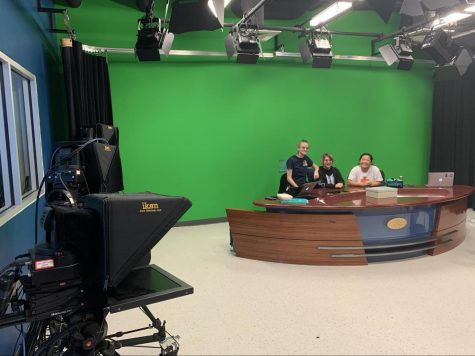
Digital Technology
Interviewees: 4 Anonymous Students
Digital Technology is a course taught by Mrs Dickinson, and it explores how computers work and other technologies. Students who take this class enjoy a light workload learning about technology that they had little knowledge of before.
“It is a growing platform. People tend to talk about IT so I decided to take this class for general information and I thought it is interesting to learn how technology is expanding,” said a student who has requested to remain anonymous.
With a growing need for technology in many fields, students recommend the digital technology class as a way to be able to function in the workforce.
“I would recommend someone to take this class because one of the essential things in a job is to know about how to handle a computer or technological problem,” said another anonymous student.
Cybersecurity
The Cybersecurity course is one in which students will be able to study in greater depth the things you are able to do on a computer, such as hacking and viruses, and how those things work.
“The class is fun, and interesting. The lessons we are learning in the Cybersecurity class are detailed and engaging. So far we have learned things like concepts of Network Structures to Database types. Overall it’s really fun to learn in Cybersecurity,” said Ryan Stupart.
With a light workload and interesting topics, Mrs. Dickinson creates an engaging class for her students to enjoy and learn useful information for the future.
“I would recommend it to other students, because it’s a cool way like if you’re into engineering or like computers or anything like that like learning about how a computer is made and different things like that I think is very interesting to learn and, you know, have fun,” said Kirsten McMannus.
With a growing reliance on technology in the near future, students strongly recommend others to take the course if they plan on pursuing a career in computers and software.
“I would [recommend it] because this class has helped me learn the fundamentals of cybersecurity and how to build on them,” said Sansida Afrin.
Engineering (Modeling/Design Path)
Students interviewed enjoy the pathway for a variety of reasons. Some, such as Elisam Bartolon-Cifuentes, intend to study architecture in the future. “I’m trying to get into architecture,” said Elisam. “I’m getting more tools, [like] A[uto]CAD, which helps me understand a bit more.” Others enjoy the creative, artistic aspect of the class, especially because it allows for visual artistry, even though the student isn’t talented in traditional visual arts, like drawing and painting.
Students spend most of their time using AutoCAD and Inventor software, and responded that the work is both fun and easy to manage. However, the schedule can be erratic. As junior Morgan Breitenbach put it, “I depends on the week. Some weeks, we have a ton of work, but other weeks, we don’t do as much.” Additionally, one student believes that the tests, while not extremely difficult, can be complicated and hard to understand.
Overall, students believe that the workload is about right. “It’s not a lot, but it’s enough to help you understand,” said junior Jordan Townsend. “Even if you don’t understand, [Ms. Gant] gives you time to go to tutoring and all that.” While most students believe that it is a primarily self-taught course, they agree that the teacher is helpful when needed and gives ample time to grasp the subject.
Prospective students should be prepared for a creative class where they are by far the primary force behind their education. Senior Colin Hennessy advised that one should make sure that this is the aspect of engineering they want to focus on before taking the class, as it is targeted towards one kind of engineering, whereas the other pathway has a broader scope. “I would say engineering is more varied,” he said, “whereas this is more targeted towards one thing. Versus engineering being general, electrical, mechanical, everything. This is just mechanical.”
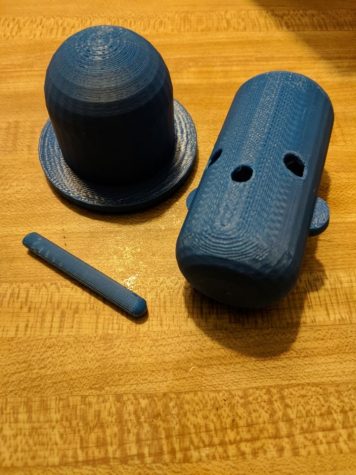
Engineering (Applications Path)
The four students interviewed generally like the pathway for its fun projects and benefit to their futures. Sometimes, according to junior Esther Williams, it’s nice to just do something different. “It’s a very interactive class,” said Williams. “It’s not like other classes where you just take tests, you actually get to have hands-on experiences.”
The pathway also allows for creativity in the projects. However, the best projects won’t come in the first year. Junior Sam Grant believes that it’s worth the wait. “The first class, Foundations of Engineering and Technology, can honestly be kind of a drag sometimes,” said Grant. “The second year is much more fun because you’ve got a lot more freedom to do anything. [If you don’t like the first year], I’d say give the second year course a shot because that’s apparently what it’s going to be like in a professional setting.”
By senior year, the skills you have gained over the previous four years are all put to the test in many independent projects. For senior Mikhi Lewis, these have been some of the best experiences of the pathway. “My favorite part about this class is being able to present what I’ve created, all the hard work that I’ve put into a project,” said Lewis. “I’d like to show others and get their feedback so I’m able to either redesign it or go ahead and send it somewhere else.”
All of these projects require lots of work in the shop, some of which must be done after school due to time constraints. According to Rory Fleming, you have to dedicate a lot of time outside of class if you really want to get all the benefits of it. “If you really want to do this, you have to do TSA, you have to consider whether you’re up to stay late, come during lunch, during STAR period,” said Fleming
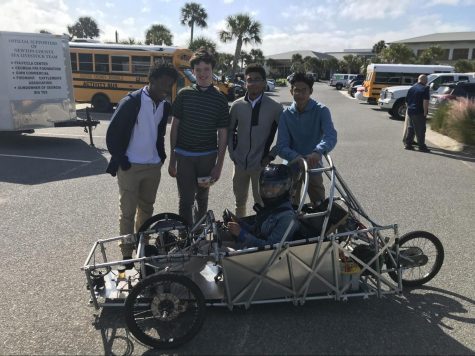
AP Computer Science A & Principles
Students interviewed responded that the workload is fairly easy, but the assignments are still helpful and fun to work through. Some said that they enjoy the subject because it involves a lot of synthesis and application of prior knowledge to computers, as well as application of the subject to daily life. “In this class, you kind of have to take what you know about math, what you know about technology, and combine them together,” said senior Mikhi Lewis.
Most of the assignments are through the program CodeHS, with which students teach themselves many skills. “The work is focused on CodeHS,” said senior Trinity Vo. “If you ask him [the teacher, Mr. Alexander] for help, then he’ll help you, but most of the time it’s based on the videos,” said Vo. While the subject matter is fairly complicated, students believe that they have the resources to understand everything, although some units may take a little longer to grasp than others. “You’ve got to have patience, because everything builds off of itself,” said junior Isaac Harkins. “So if you don’t have patience getting through the first couple weeks, you won’t be able to complete the year.”
Prospective students should be prepared for a lot of problem-solving and self-teaching with the CodeHS software, which requires the student to be driven to learn computer science. The workload, according to the students, is not difficult, and getting an A is fairly common. However, don’t expect to be gingerly guided through the course by the teacher. As sophomore Owen Oertell put it, “I would recommend this class to others who are looking for a challenge.”

